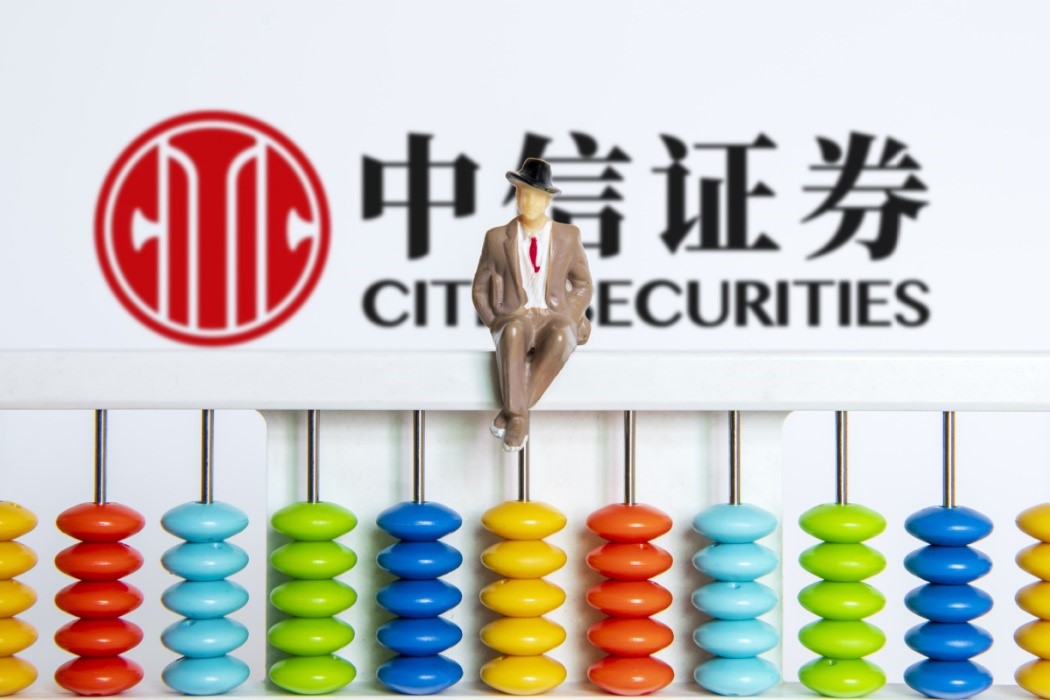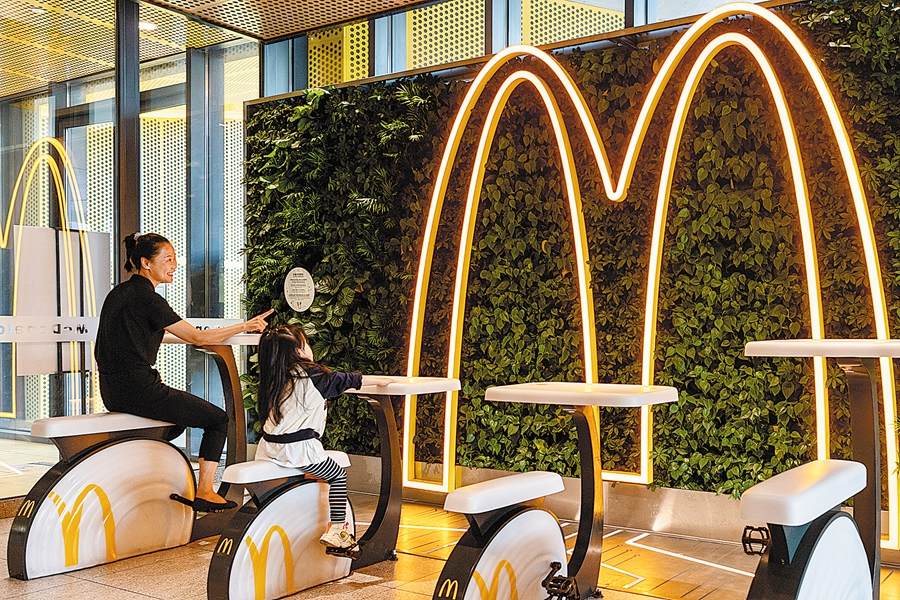1
5th import expo to further open up China market

The fifth China International Import Expo, set to be held a month from now, is in its final preparation stage with foreign companies eager to gain access to more market opportunities.
The expo, to be held in Shanghai, is on schedule despite the recurring impact of COVID-19, and will showcase the country's commitment to further opening up its massive market for shared growth.
As the fifth CIIE approaches, exhibits are arriving in Shanghai via various means. On Sept 20, the first shipment of inbound exhibits, with a declared value of 560 million yuan ($78.70 million), cleared customs at Shanghai Pudong International Airport.
The China-Europe freight train has also become a popular choice for transportation among companies attending the CIIE, said Wang Jinqiu, chairman of Shanghai Oriental Silk Road Multimodal Transport, adding that this is the second year that the service has been used to deliver products to the CIIE in Shanghai.
According to Shanghai Customs, the peak of exhibit arrivals is expected to occur in October.
Shanghai Customs said it will continue to optimize the clearance process for exhibits and provide safe, convenient and efficient customs clearance services.
Sun Chenghai, deputy director of the CIIE Bureau said the work of inviting enterprises to participate in the fifth CIIE had been completed and positive progress is being made in terms of setting up exhibitions.
Thousands of miles away, Roy van den Hurk, general manager of Theland Global R&D at Milk New Zealand Dairy, is busy applying for his visa to attend the coming 2022 expo.
"China's huge consumer market helps foreign trade enterprises like us to find opportunities in the green food industry and promote global economic recovery," said van den Hurk, who has participated in the event three times before.
The expo has helped the New Zealand company to embark on the "fast track" of development in China, van den Hurk noted, as Theland products are now even available on the shelves of supermarkets in small counties in central and western China.
Data shows that more than 280 of the world's top 500 enterprises and industry giants will participate in this year's CIIE, with nearly 90 percent of the participants from last year also joining this year.
Will Song, global senior vice-president and China chairman at Johnson & Johnson, said that over the last four years the company had debuted dozens of products at the CIIE, and this year at the fifth expo it will unveil about 40 new products to China.
China's Vice-Minister of Commerce Sheng Qiuping said the CIIE has given full play to its role as a window for building a cooperation platform for those engaged both at home and abroad, and has become a place for exhibitors to debut their new global products, cutting-edge technologies and innovative services.
Media Source: China Daily
2
Forex reserves edge down in Sept

China's foreign exchange reserves went down to $3.029 trillion by the end of September due to a strong US dollar and a fall in global financial markets, the State Administration of Foreign Exchange said on Friday.
The amount marked a decline of $25.9 billion or 0.85 percent compared with the end of August, SAFE said in a statement.
Wang Chunying, spokeswoman of SAFE, said the country's foreign exchange reserves edged down as global financial markets shed, while the dollar strengthened amid adjustments of monetary and fiscal policies in major economies. A stronger dollar has made reserves denominated in other currencies less valued in the dollar term.
Despite rising unstable external factors and higher volatility of international financial markets, China's economy continues to recover and features great resilience, conducive to keeping the amount of foreign exchange reserves stable, Wang said.
Media Source: China Daily
3
Chinese broker ranks 1st in equity sales

CITIC Securities Co, a major Chinese securities firm, earned the No 1 ranking in the underwriting of global equity offerings in the first three quarters, overtaking US investment bank Goldman Sachs Group Inc, thanks to a surge in China's initial public offerings.
It is the first time since 2009 that the top spot at the end of a quarter was not held by the US firm or its rivals on Wall Street. The shift occurred amid a sharp decline in listings elsewhere, data compiled by Bloomberg show. It reflects China's economic resilience, experts said.
In the first three quarters, companies raised $326.1 billion through global share sales, down 66 percent from the same period last year. The decrease was only 10.1 percent on the Chinese mainland, where $106.8 billion was raised through equities.
CITIC Securities worked on $21.3 billion in global equity offerings, including four of this year's 10 largest listings worldwide. Its market share was 6.7 percent, followed by Goldman Sachs' 6.6 percent, or $20.9 billion, in global equity offerings, according to Bloomberg.
Deloitte China's Capital Market Services Group forecast that for the full year of 2022, about 140 to 160 companies will have listed on the Shanghai Stock Exchange's sci-tech innovation board, or the STAR Market, raising 230 billion to 260 billion yuan ($32.32 billion to $36.54 billion). Another 190 to 210 businesses are expected to have listed on the Nasdaq-style ChiNext at the Shenzhen bourse, raising 190 billion to 215 billion yuan. The Shanghai and Shenzhen main boards are likely to have had about 80 to 100 IPOs raising 140 billion to 170 billion yuan.
The Beijing Stock Exchange, a bourse tailor-made for innovative small and medium-sized enterprises at an earlier development stage than those listed in Shanghai and Shenzhen, is estimated to host about 50 to 80 new listings raising approximately 10 billion to 15 billion yuan.
"We expect that the momentum of listings on the STAR Market, ChiNext and the Shanghai and Shenzhen main boards during the first three quarters will continue in the fourth quarter. Boosted by various economic stimulus measures, the amount of IPO funds raised is likely to continue to rise, and the A-share IPO market may mark another record year in 2022," said Tong Chuanjiang, the A-share offering leader at Deloitte China's Capital Market Services Group.
Tong said that China's adoption of a registration-based IPO system has provided a strong backing for the A-share market by helping many innovative tech companies issue equities.
Chen Jiahe, chief investment officer at Beijing-based wealth management firm Novem Arcae Technologies, said the US stock market is facing multiple challenges, including an economic downturn, high inflation and massive increases in energy prices.
"Compared with the US economy, the Chinese economy is more stabilized this year, with China's exports and investment remaining fairly strong. Although the recovery of Chinese consumption is slow, the problem is easier to solve than high inflation in the United States as the COVID-19 pandemic is largely brought under control," Chen said.
In addition, Chinese companies' enthusiasm for IPOs in the US has dropped significantly due to the audit supervision dispute between Chinese and US regulators. Some companies have chosen to launch their IPOs or secondary listings in Hong Kong, and they are more willing to seek help from Chinese brokers. Although regulators from both countries have taken a substantial step forward by signing an audit oversight cooperation agreement, businesses' concerns have not yet been removed as they are still waiting to see the implementation of the agreement, he said.
Media Source: China Daily
4
More brands embrace eco-friendly building concept to create 'safer world'

Massive green winds of change are sweeping Chinese retail enterprises' approach to building design, with "low-carbon consumption" emerging as the overarching guideline for related products, services and even the location concerned.
The green building industry, experts said, is on the fast track in China. According to the 2021 annual report on China's green building industry, the 34 provincial-level administrative regions have embraced the new Leadership in Energy and Environmental Design or LEED certifications — a globally recognized green building certification system.
The annual report was published by the US Green Building Council and Green Business Certification Inc. The LEED rating system is a globally recognized index to evaluate green, healthy and resilient buildings.
LEED buildings are more environmentally friendly than normal ones, utilize energy-efficient equipment, and actively adopt renewable energies or other technologies that reduce negative impacts of buildings on the environment.
According to the report, in 2021, there were 1,439 new LEED registrations, up 21 percent year-on-year. There were 1,872 retail buildings or spaces participating in LEED.
Wang Jing, vice-president of the USGBC and GBCI North Asia, said: "No matter what business the companies are in, they need buildings and spaces to operate. The decarbonization of companies' operating facilities are therefore vital to realizing their carbon neutrality goal as many companies are committed to becoming carbon-neutral. That's why, we are seeing retail brands accelerating their LEED registration, not just for their retail stores but also for buildings and spaces along their value chains such as offices, factories, data centers, warehouses, et cetera."
For example, on Aug 23, Starbucks' first "green outlet" in Wuhan, Hubei province, opened. The green outlet recognition system was developed by Starbucks and organizations with authority to do so. Based on the recognition standard, every link related to operations, including energy saving, water consumption management and waste disposal, is strictly monitored. Compared to a regular Starbucks store of the same size, a green outlet is estimated to reduce carbon emissions by 10.57 metric tons per year and use of water by 301.7 tons.
Starbucks has opened green stores in other cities such as Beijing and Shanghai. The company plans to open 2,500 green outlets by 2025, China Economic Weekly reported.
On July 27, Swedish furniture conglomerate Ikea announced that its first carbon-neutral outlet in the world was put into operation in Tianjin. In April, fast-food chain KFC announced it will establish its first batch of green outlets in Beijing and Hangzhou, Zhejiang province.
Chinese home appliance giant Gome Retail Holdings Ltd issued green consumption coupons this year, guiding consumers to buy low energy-consuming home appliances.
To date, McDonald's China owns 1,600 LEED-certified restaurants, three LEED-certified locations of Ronald McDonald House Charities, and its China headquarters in Shanghai also received LEED Platinum certification recently.
The McDonald's restaurant at the Shougang Park in Beijing is being designed and constructed according to LEED zero-carbon and zero-energy standards, aiming to be finally certified after one-year of operational data collection. It is expected to become the first restaurant in the Asia-Pacific region to receive both LEED Zero Carbon and LEED Zero Energy certifications.
"Currently, the sustainable trends are the most pronounced in China's commercial real estate sector as most of the new commercial projects are taking the green path. Compared with material innovations or changes in business models, the sustainability of the retailers' facilities is easier to be benchmarked with mature green building standards such as LEED," said Wang.
Guo Haifei, deputy director of the green innovation office at the Investment Consulting Special Committee of the Investment Association of China, said: "Under the country's dual goals of peaking carbon emissions by 2030 and achieving carbon neutrality by 2060, the development of sustainable buildings is expected to see rapid growth. The buildings offer not only environmental and social benefits, but great economic benefits.
"Taking advantage of green buildings, retailers can lower their costs, harvest carbon sink benefits, and also cut financing costs by using financial instruments such as green bonds and sustainability-linked loans."
To make better use of green buildings, retailers should pay attention to the monitoring of actual environmental benefits and information disclosure, so that their functions are more practical, Guo said.
"People on average spend 90 percent of their time indoors. If, one day, we can consciously recognize and choose green buildings in our daily lives just as we choose our zero-sugar and zero-carbon drinks nowadays, the world will be greener, safer and more resilient," said Wang with the USGBC and GBCI.
Media Source: China Daily